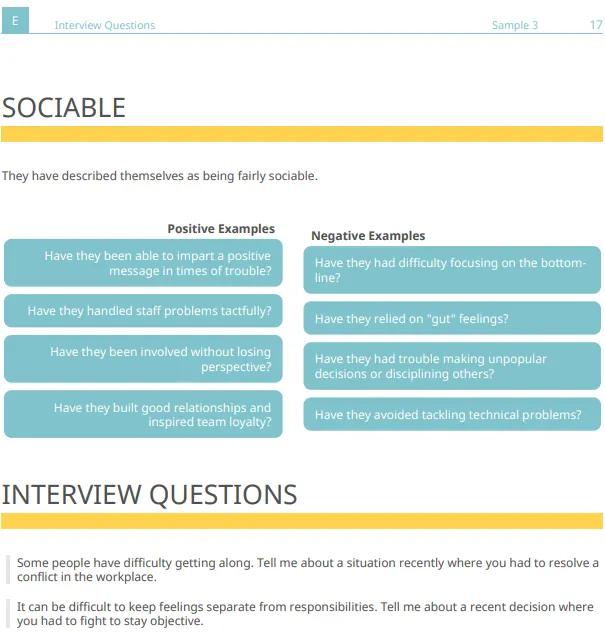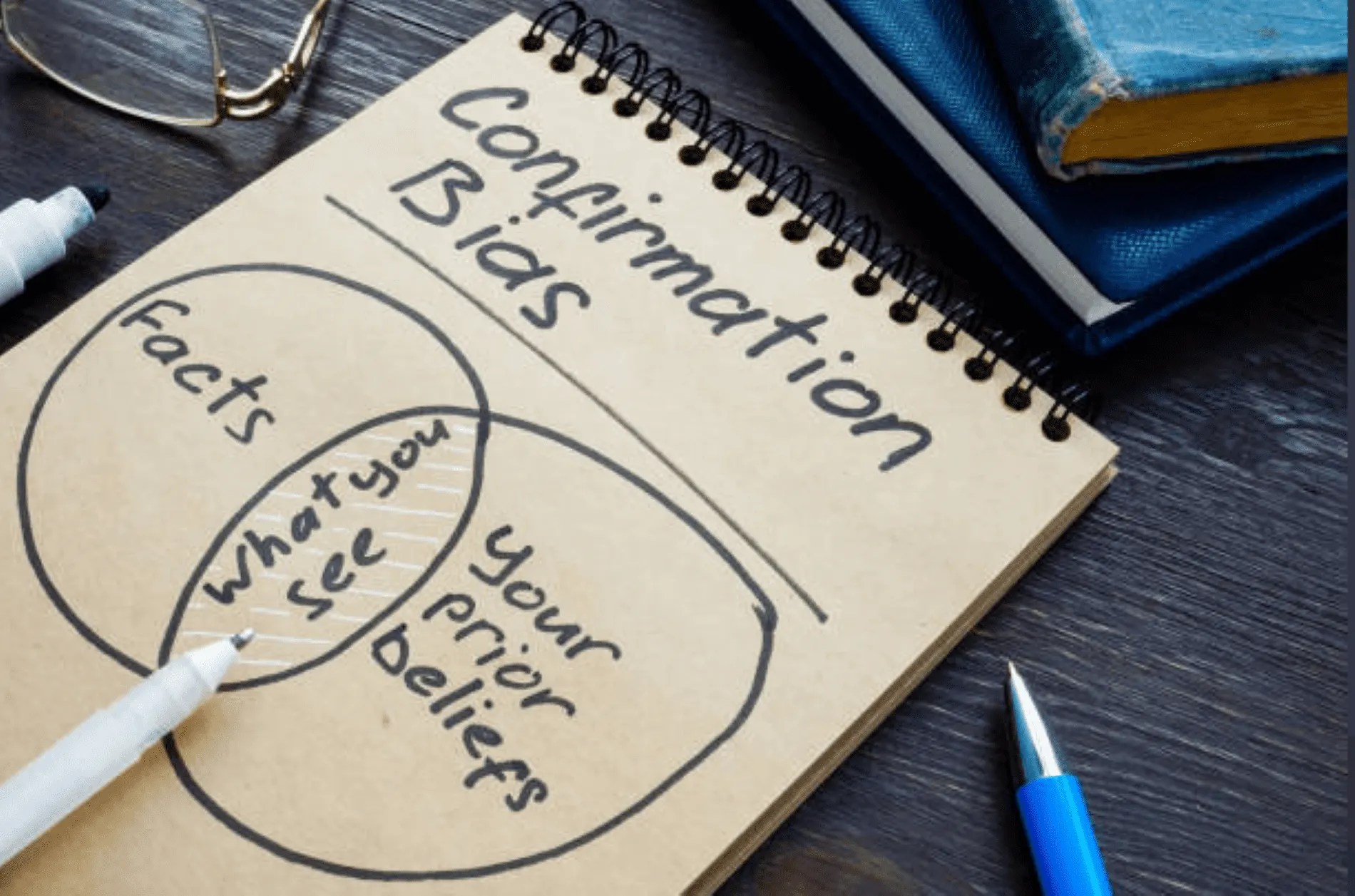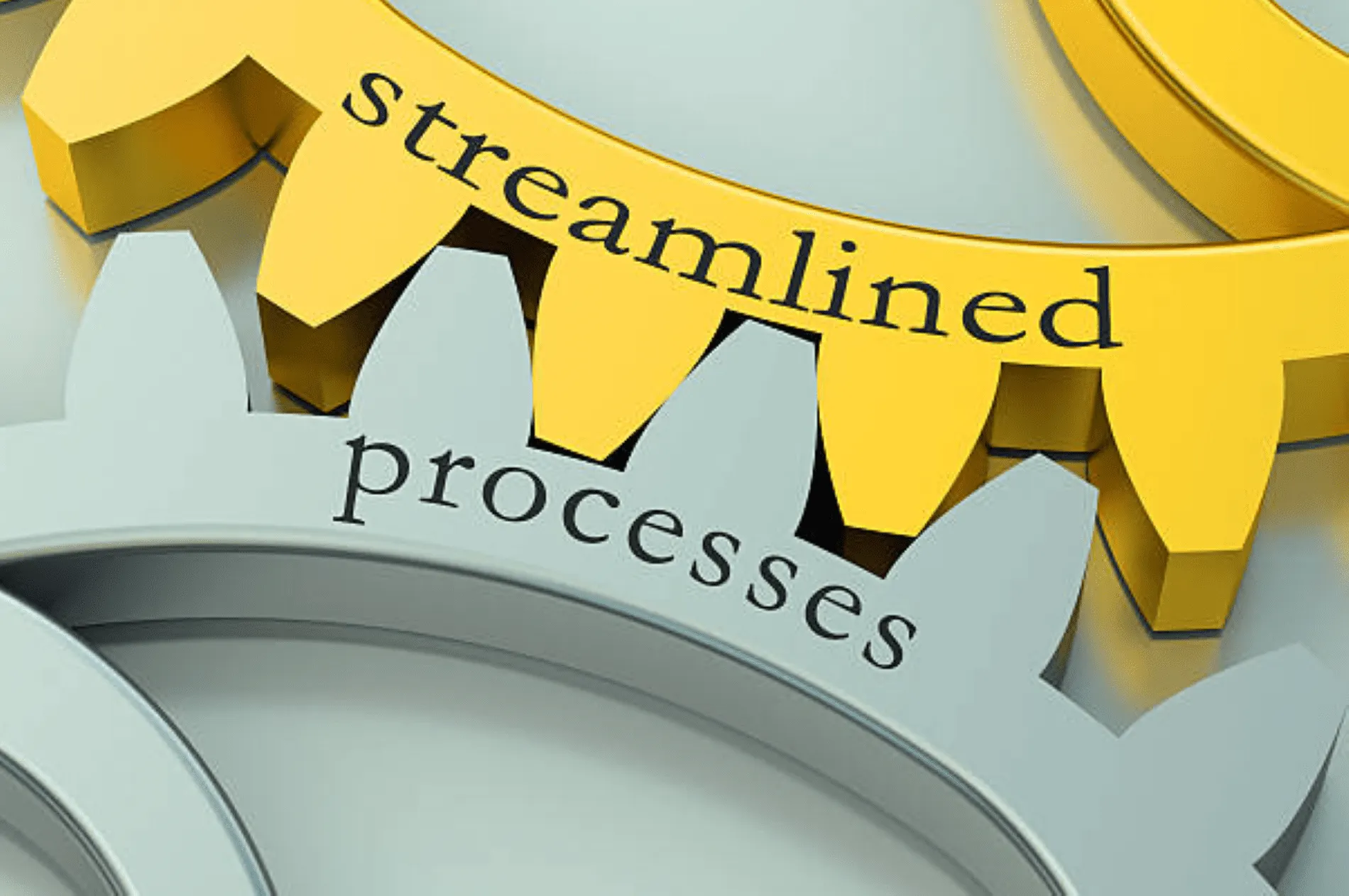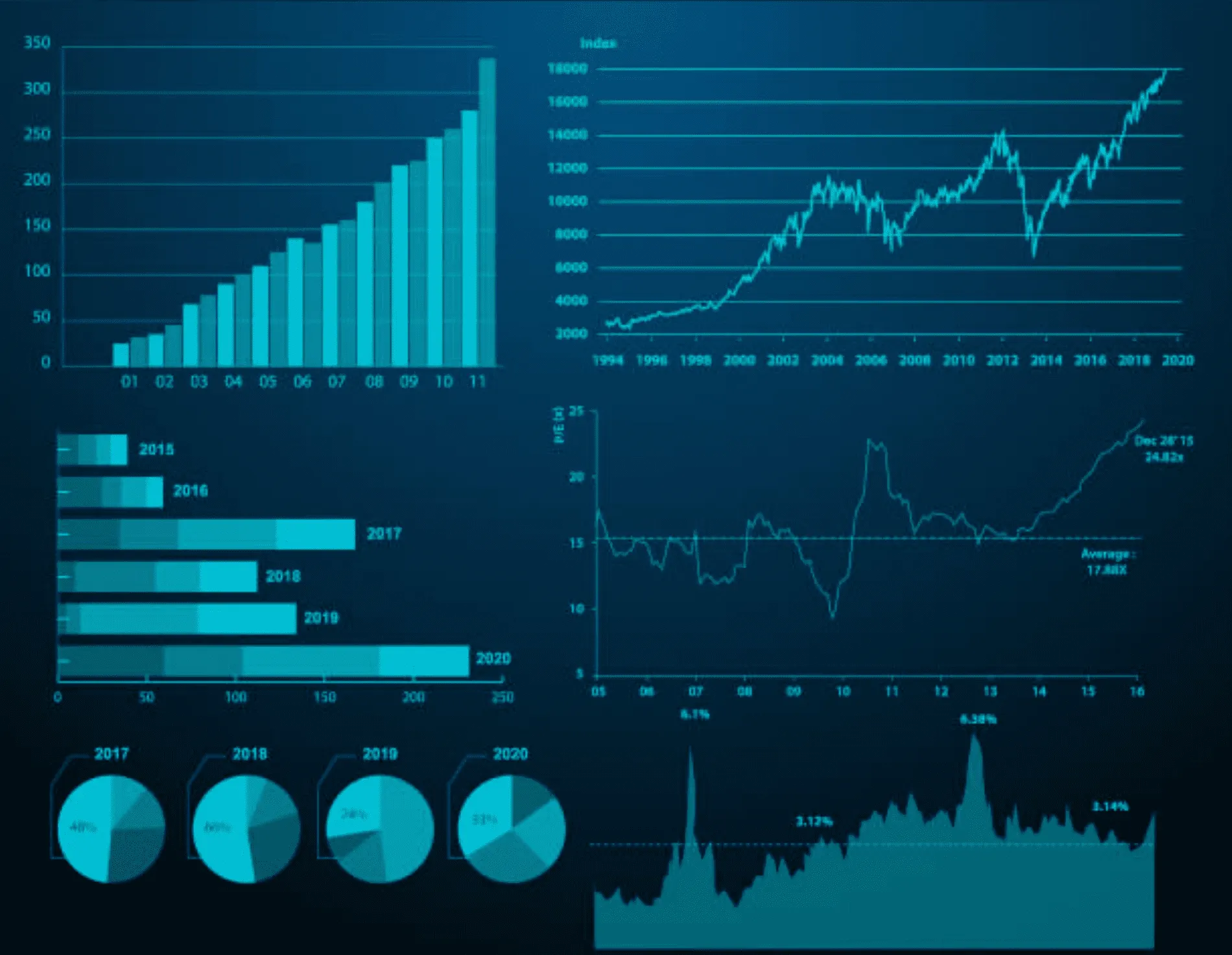Unearth Hidden Treasures: Mastering Behavioral Assessment In Hiring

Author: Tyesia Hunter
Unraveling the Power of Behavioral Assessment in Modern Hiring
Today's competitive job market demands a more nuanced approach when it comes to hiring top talent. Gone are the days of relying solely on resumes and interviews to make informed decisions.
Enter behavioral assessment, an indispensable tool that uncovers hidden gems in the hiring process. In this article, we will unravel the power of behavioral assessment in modern staffing, exploring how it revolutionizes talent evaluation and transforms hiring practices.
The science behind behavioral assessment is what makes it so effective in identifying exceptional candidates. Unlike traditional methods that rely heavily on qualifications and experience, behavioral assessment focuses on understanding an individual's actions, reactions, and thought processes.
By delving into their past behaviors and decision-making patterns, employers gain valuable insights into a candidate's potential fit within their organization. Picture this scenario: a hospital is searching for an anesthesiologist to join their team.
They receive several resumes from qualified candidates with impressive qualifications and years of experience. However, by relying solely on these credentials, they may hire someone who looks excellent on paper but lacks the necessary temperament or communication skills crucial for success in such a high-pressure role.
This is where behavioral assessment steps in as a game-changer. By implementing scientifically-designed assessments tailored to measure specific competencies required for the position – such as adaptability under stress or effective teamwork – employers can identify candidates whose behaviors align with the demands of the role.
This not only ensures better performance but also enhances team dynamics and reduces turnover rates within organizations. Behavioral assessment has emerged as a powerful tool that enables organizations to go beyond superficial indicators like resumes and interviews during staffing processes.
In the following sections of this article, we will explore different aspects of behavioral assessment in depth - from crafting tailored interview questions to navigating bias - providing you with a comprehensive guide to mastering this transformative hiring approach.
Learn about our unique Clinician Creation Recruiting Method

The Science Behind Behavioral Assessment:
What Makes it So Effective?
Behavioral assessment is a game-changer in the world of hiring, and its effectiveness lies in the science behind it. By understanding human behavior and psychology, employers can gain valuable insights into a candidate's true potential. One reason why behavioral assessment is so effective is that it provides a more in-depth understanding of candidates beyond what can be gleaned from their resumes or interviews alone.
Traditional hiring methods often rely on subjective evaluations or gut feelings, which can lead to biased decisions and missed opportunities. Behavioral assessment, on the other hand, uses scientifically validated tools and techniques to assess a candidate's personality traits, values, motivations, and behavioral tendencies.
For example, let's say you're hiring an anesthesiologist for your medical practice. Resumes may provide information about their education and experience but won't give you much insight into how they handle high-pressure situations or interact with patients.
With behavioral assessment tools like structured interviews or personality assessments specifically designed for healthcare professionals, you can delve deeper into their interpersonal skills, ability to remain calm under pressure, and level of empathy towards patients. Another factor that contributes to the effectiveness of behavioral assessment is its predictive validity.
Numerous studies have shown that certain behaviors are strong indicators of future job performance. For instance, research has found a positive correlation between conscientiousness—characterized by traits such as reliability, attention to detail, and organizational skills—and job performance across various roles and industries.
By evaluating candidates' behaviors related to conscientiousness through specialized assessments or situational judgment tests (SJTs), employers can make more informed predictions about their potential success in the role. In addition to predictive validity, behavioral assessment also helps mitigate bias in the hiring process.
Traditional methods often suffer from unconscious biases that can influence decisions based on factors such as race or gender. However, behavioral assessment focuses on evaluating specific behaviors rather than personal characteristics unrelated to job performance.
This shift allows employers to make objective evaluations based on observable behaviors, reducing the impact of bias and promoting a fairer hiring process. The science behind behavioral assessment plays a crucial role in its effectiveness.
By employing validated tools and techniques, employers can gain deeper insights into candidates' behavior, predict job performance more accurately, and minimize bias in the hiring process. This approach allows for a more comprehensive evaluation of candidates' potential, enabling employers to uncover hidden gems among their pool of applicants.
Beyond Resumes: Why Behavioral Assessment Is the Key to Identifying Hidden Gems
When it comes to identifying truly exceptional candidates, the behavioral assessment goes beyond surface-level qualifications and dives deep into their inherent characteristics, personality traits, and values. Resumes can only provide a glimpse of an individual's experience and skills, but they fail to shed light on their work ethic, problem-solving abilities, and emotional intelligence – qualities that are crucial for success in any role.
Imagine you're an executive looking to fill a critical position within your organization. You receive two resumes that seem equally impressive – one from an experienced anesthesiologist with stellar qualifications and another from a relatively unknown clinician but with intriguing attributes.
While the anesthesiologist may appear as the safe choice based on their credentials alone, behavioral assessment enables you to dig deeper into each candidate's behavior patterns, motivations, and interpersonal skills. By utilizing behavioral assessment techniques such as personality tests or structured interviews that focus on past experiences and hypothetical scenarios, employers can gain valuable insights into how candidates are likely to perform in real-world situations.
This approach helps identify individuals who possess the right attitude, adaptability, collaboration skills, and leadership potential – characteristics often overlooked by traditional hiring methods. Behavioral assessment allows employers to look beyond resumes and qualifications by providing a holistic view of candidates' true potential.
It offers valuable insights into their behavior patterns, motivations, and interpersonal skills – factors that can greatly impact job performance and cultural fit within an organization.
So next time you're faced with choosing between predictable credentials or exploring uncharted talent waters using behavioral assessment tools could be the key to uncovering hidden gems in your staffing process.
Demystifying Behavioral Interviewing: A Proven Technique for Talent Evaluation
When it comes to hiring top-notch candidates, traditional interviews may fall short of providing a comprehensive understanding of an applicant's true potential. That's where behavioral interviewing steps in, armed with the power to delve deep into a candidate's past experiences and behaviors to predict future performance.
It's like peering into a crystal ball but without all the hocus-pocus. Instead of relying solely on hypothetical questions like "What would you do in this situation?", behavioral interviewing focuses on real-life scenarios that candidates have encountered in the past.
By asking questions like "Tell me about a time when you had to deal with a difficult coworker and how you handled it," employers gain valuable insights into an applicant's problem-solving skills and interpersonal abilities. To conduct effective behavioral interviews, interviewers must identify key competencies required for the role.
For example, if you're hiring an Executive Assistant, you might look for attributes such as organizational skills, adaptability, and ability to handle confidential information. Once these competencies are identified, interviewers can tailor their questions specifically around them.
This ensures that they're not just getting generic answers but rather concrete examples of how candidates have demonstrated these desired qualities in their past roles. To make the most out of behavioral interviews, it's essential to follow a structured approach.
Start by gathering information about the position and analyzing what skills are necessary for success. Then create a list of targeted competency-based questions that will help assess those required skills.
During the interview itself, listen closely to how candidates describe their past experiences and behaviors while probing further for details when needed. Take note of specific examples they provide and evaluate whether those align with your organization's values and requirements.
By demystifying behavioral interviewing techniques and embracing its power as a talent evaluation tool, companies can uncover hidden gems within their pool of applicants. It allows employers to go beyond the superficialities of a resume and truly understand a candidate's potential for success in the role.
So, next time you're staffing for that high-stakes position – whether it's an anesthesiologist or an Executive – consider incorporating behavioral interviewing into your hiring process. You just might discover a diamond in the rough!

Selecting the Right Assessment Tools: Choosing Gems, Not Just Applicants
When it comes to selecting the right assessment tools for behavioral evaluation in hiring, it's crucial to aim for finding gems rather than just applicants. Anesthesiologists don't use a single tool to diagnose and treat patients; they have an array of instruments at their disposal. Similarly, in the realm of hiring, HR professionals shouldn't rely on a one-size-fits-all approach.
A well-rounded assessment toolkit should include a combination of tools that complement each other and provide a holistic view of candidates' behaviors and skills. One essential tool is psychometric tests, which measure personality traits, cognitive abilities, and aptitude.
These tests can help identify potential gems who possess the desired traits for success in a specific role or company culture. Another important assessment tool is situational judgment tests (SJTs).
SJTs simulate real-world work situations and ask candidates how they would respond. These tests allow employers to assess critical thinking skills, problem-solving abilities, and decision-making processes.
By observing their responses in hypothetical scenarios relevant to the role they're applying for, recruiters can uncover hidden gems with exceptional potential. In addition to psychometric tests and SJTs, structured interviews are invaluable in evaluating candidates' behaviors.

Unlike traditional unstructured interviews where questions vary widely depending on the interviewer's mood or biases, structured interviews follow a standardized format with predetermined questions that assess specific competencies required for the job. This method ensures fairness and consistency while providing valuable insights into how candidates handle different situations—an indispensable feature when searching for executive-level staffing gems.
Selecting the right assessment tools involves considering not only the specific requirements of each role but also the desired organizational culture and values—factors that are unique to your company. By thoughtfully combining psychometric tests, SJTs, and structured interviews tailored to your needs as an employer, you'll be equipped with a powerful set of evaluation instruments that will help you uncover hidden gems amidst your applicant pool
The Art of Crafting Tailored Behavioral
Interview Questions
Crafting tailored behavioral interview questions is an art that requires finesse and strategic thinking. It is not enough to simply ask generic questions; instead, you must carefully design questions that elicit specific behavioral responses from candidates.
These responses provide deeper insights into their past experiences and future potential, helping you uncover the hidden gems among your pool of applicants. One important aspect of crafting tailored behavioral interview questions is aligning them with the specific skills and qualities required for the role.
For example, if you are hiring for an executive position, you may want to focus on questions that assess leadership abilities, decision-making skills, and strategic thinking. You might ask a candidate to describe a time when they faced a complex problem and how they navigated through it successfully.
This will give you a glimpse into their problem-solving approach and their ability to handle high-pressure situations. Another crucial factor in crafting tailored behavioral interview questions is ensuring they are open-ended.
Open-ended questions allow candidates to provide detailed responses, which can help gauge their depth of experience and level of reflection. For instance, instead of asking a yes-or-no question like "Have you ever managed a team before?" consider asking "Can you describe a time when you had to lead a team through a challenging project?

How did you overcome any obstacles that arose?" This prompts the candidate to provide specific examples rather than providing one-word answers. It's essential to structure your tailored behavioral interview questions in the situation-action-result (SAR) format.
This format encourages candidates to provide concrete details about their past experiences. Begin by describing the situation or task at hand, then ask about the actions they took to address it, and finally inquire about the results achieved.
This structure enables you to assess not only their competencies but also their ability to reflect on outcomes and learn from past experiences. Crafting tailored behavioral interview questions requires careful consideration of skill alignment, open-mindedness, and SAR structure.
By taking these aspects into account, you can create questions that delve deep into a candidate's experiences, providing valuable insights to identify the hidden gems in your pool of applicants. So, put on your anesthesiologist hat and dive into the process of designing questions that will bring out the best in your candidates during the hiring process.
Analyzing Behavioral Responses: Spotting Red Flags and Gold Standards
When it comes to hiring, analyzing behavioral responses is a crucial step in identifying the best candidates. It allows you to spot red flags that may indicate potential issues with a candidate's suitability for a role, while also helping you identify those shining gold standards who possess the qualities and skills your organization is seeking.
One key aspect of analyzing behavioral responses is paying attention to consistency. By carefully reviewing a candidate's answers across different interview questions and scenarios, you can gauge how consistent they are in their responses.
Inconsistencies could raise concerns about a candidate's honesty or ability to handle different situations effectively. On the other hand, candidates who consistently demonstrate alignment with your desired attributes provide reassurance that they possess the qualities needed for success.
Another important factor in analyzing behavioral responses is evaluating the depth of a candidate’s examples and anecdotes. Gold-standard candidates will not only provide surface-level answers but will delve into specific details and provide concrete examples of their experiences and achievements.
For instance, if you’re interviewing an executive for a leadership role, they should be able to share compelling stories about how they successfully led teams through challenging projects or achieved significant business outcomes. Conversely, if a candidate provides vague or generic examples without going into much detail, it could be an indication that their experiences may not be as relevant or impactful.
Additionally, observing the emotional intelligence displayed by candidates during their responses can be an effective way to differentiate between red flags and gold standards. Emotional intelligence is crucial in today's work environment as it directly impacts how individuals handle stress, communicate with colleagues, and navigate difficult situations.
Pay attention to how candidates express empathy, self-awareness, adaptability, and conflict-resolution skills in their answers. Candidates who exhibit these qualities are more likely to thrive within your organization's culture while effectively managing relationships with teammates.
By scrutinizing behavioral responses for consistency, depth of examples shared by candidates, and emotional intelligence displayed, you can effectively spot red flags and identify those shining gold standards who possess the potential to excel in the role you’re hiring for. This analysis provides valuable insights into a candidate's suitability, enabling you to make informed decisions and ultimately build a strong, high-performing team.

Navigating Bias in Behavioral Assessment: Ensuring Fairness and Objectivity
When it comes to hiring, fairness and objectivity should be the bedrock of any selection process. However, biases can inadvertently seep into our decision-making, even in behavioral assessment. Organizations must take proactive steps to minimize bias and ensure a level playing field for all candidates.
First and foremost, it's important to acknowledge that biases can manifest in various forms. One common type of bias is called "confirmation bias," where we tend to interpret information in a way that confirms our pre-existing beliefs or assumptions about certain groups of people.
For example, if we have a stereotype that introverted individuals are less effective communicators, we may subconsciously seek evidence to support this belief during a behavioral assessment. To counteract biases, it's essential to establish standardized evaluation criteria based on job-related competencies rather than personal preferences or stereotypes.
This means clearly defining the skills and traits required for success in the role and assessing candidates against these predetermined benchmarks. By focusing on objective indicators of performance rather than subjective impressions, organizations can reduce the influence of bias.
Additionally, implementing blind screening processes can also mitigate bias during behavioral assessment. Blind screening involves removing personally identifiable information from resumes or assessments before they reach the evaluators.
This approach helps prevent discriminatory judgments based on factors such as gender, ethnicity, or age. Instead, evaluators can solely focus on evaluating candidates' behavioral responses without being influenced by irrelevant demographic information.
Ensuring fairness and objectivity in behavioral assessment requires ongoing training and awareness among hiring managers as well. Organizations should educate their staff about unconscious biases and provide them with tools to recognize and challenge their prejudices throughout the hiring process.
By fostering a culture of inclusivity and continuous learning within their staffing teams, companies pave the way for fairer decision-making when it comes to selecting top talent. Navigating bias is imperative when conducting behavioral assessments in the hiring process.
From confirmation bias to unconscious prejudices, biases can unconsciously influence decision-making unless measures are taken to minimize their impact. By establishing standardized evaluation criteria, implementing blind screening processes, and providing training on bias awareness, organizations can foster fairness and objectivity in behavioral assessment and ensure that every candidate has an equal opportunity to shine as the true gem they may be – whether they're an executive or an aspiring anesthesiologist.
Learn about our Dynamic Weighing Index to remove confirmation bias in hiring

Implementing Behavioral Assessment in Your Hiring Process: A Step-by-Step Guide
So, you've recognized the power of behavioral assessment in uncovering hidden gems during the hiring process. Now it's time to dive into the nitty-gritty of implementation.
Here's a detailed step-by-step guide to seamlessly incorporate behavioral assessment into your hiring process:
Step 1: Define Your Ideal Candidate Profile
Before diving headfirst into the assessment phase, take a moment to clearly define what traits and qualities you're looking for in your ideal candidate. Consider the specific skills, competencies, and behaviors that are crucial for success in the role.
For instance, if you're staffing an executive position, you might prioritize traits such as leadership ability, strategic thinking, and adaptability. On the other hand, if you're hiring an anesthesiologist, attention to detail, teamwork skills, and stress management might top your list.
Step 2: Select Appropriate Assessment Tools
With your candidate profile in hand, it's time to choose the right assessment tools that align with your hiring goals. There is a wide range of options available including personality tests, situational judgment tests (SJTs), or even work simulations. Assessments such as these provide valuable insights into candidates' behaviors and abilities beyond what can be gleaned from resumes or interviews alone.
Step 3: Integrate Assessments at Key Stages
Now comes the crucial part – integrating assessments into your existing hiring process. Determine which stages of your recruitment process would benefit most from behavioral assessments. Many organizations find it effective to include these assessments after initial resume screenings but before conducting interviews.
This helps filter out candidates who may look good on paper but lack essential behavioral competencies. Consider utilizing a combination of assessment methods throughout different stages to gather comprehensive data about candidates' behaviors and suitability for the role.
Implementing behavioral assessment requires careful planning and attention to detail in order to effectively identify hidden gems during the hiring process.
By defining your ideal candidate profile, selecting appropriate assessment tools, and integrating assessments at key stages, you can enhance your screening process and increase the chances of identifying top talent that aligns with your organization's needs. Remember, by investing in behavioral assessment, you're not only improving your hiring outcomes but also setting the stage for long-term success within your team.
Real-world Success Stories: How Behavioral Assessment Transformed Hiring for Leading Companies
In the competitive landscape of staffing top talent, behavioral assessment has emerged as a game-changer for leading companies across industries. These organizations have witnessed remarkable transformations in their hiring practices, thanks to the insights and predictive power offered by behavioral assessment.
Let's explore some real-world success stories that demonstrate how this approach has unlocked hidden gems and revolutionized the way these companies identify exceptional candidates. One such success story comes from a renowned healthcare organization that was struggling to find the right fit for an anesthesiologist position.
Despite having impressive resumes and qualifications, they were unable to gauge whether clinicians possessed the necessary interpersonal skills and adaptability required in such a high-pressure role. By incorporating behavioral assessment into their hiring process, they were able to ask targeted questions that revealed candidates' attitudes towards teamwork, decision-making under pressure, and patient empathy.
The results were astounding - not only did they successfully hire an exceptional anesthesiologist who excelled in his role but also witnessed reduced turnover rates in this critical position. Another prominent success story involves an executive search firm that was tasked with finding a visionary leader for a large multinational corporation.
Traditional assessments fell short when it came to assessing candidates' leadership styles, emotional intelligence, and ability to navigate complex challenges. By integrating behavioral assessment into their evaluation process, they gained valuable insights into how candidates approached problem-solving, motivated teams, and adapted to change.
This enabled them to confidently recommend a candidate who had the perfect balance of strategic thinking, emotional resilience, and effective communication skills - qualities essential for driving organizational growth in today's fast-paced business landscape. Consider a technology startup faced with rapid expansion where cultural fit was crucial for maintaining its innovative edge.
They recognized that relying solely on technical expertise would result in missed opportunities or potential clashes within teams. Through behavioral assessment methods like scenario-based questioning and personality inventories tailored specifically for startups, they were able to identify individuals with a collaborative mindset, a growth-oriented attitude, and the ability to thrive in an agile environment.
As a result, they built a strong team of diverse talents that not only elevated their product development but also fostered a positive work culture that attracted top-tier talent. These success stories highlight the transformative impact of behavioral assessment on hiring practices.
By going beyond traditional qualifications and resumes, organizations have been able to uncover hidden gems - candidates who possess the right mix of technical skills, soft skills, and cultural fit. These companies have experienced reduced turnover rates, increased productivity, and enhance overall organizational performance by leveraging the power of behavioral assessment in their hiring processes.
Measuring Assessment Effectiveness: Metrics That Prove the Value of Behavioral Evaluation
When it comes to assessing the effectiveness of behavioral evaluation in the hiring process, metrics play a crucial role. In this section, we will explore some key metrics that can help you measure the value of behavioral assessment.
These metrics will not only provide insights into your recruitment strategies but also help you identify hidden gems among candidates:
1. Quality of Hire: One of the most important metrics to consider when measuring assessment effectiveness is the quality of hire.
This metric assesses how well candidates perform in their roles after being hired. By comparing the performance and success rates of candidates who went through a behavioral assessment with those who didn't, you can determine whether your assessments are accurately predicting job performance and identifying top talent.
For example, let's say you're an executive at a healthcare staffing agency looking to hire an anesthesiologist. By tracking key performance indicators such as patient satisfaction scores, successful completion of surgeries, and overall clinical outcomes, you can evaluate whether candidates who were assessed using behavioral evaluation techniques are performing at a higher level compared to those who were not.
2. Time-to-Hire: Another metric that can demonstrate the value of behavioral evaluation is time-to-hire. This metric measures how long it takes from posting a job opening to making a final hiring decision.
By analyzing this data for candidates who went through behavioral assessment versus those who didn't, you can determine if incorporating this evaluation method helps streamline your hiring process and reduce time spent on interviewing unqualified applicants. Let's revisit our healthcare staffing agency example.
If you notice that candidates assessed using behavioral evaluation techniques tend to progress more quickly through your hiring pipeline compared to others, it indicates that these assessments are effectively screening out less suitable candidates early on in the process.
3. Employee Retention Rates: A high employee turnover rate can be costly for any organization.
Therefore, measuring employee retention rates is essential in evaluating assessment effectiveness. By comparing retention rates between employees who underwent behavioral assessment and those who didn't, you can assess whether the evaluation process successfully identifies candidates who are more likely to stay with your organization for the long term.
For instance, suppose you find that anesthesiologists assessed through behavioral evaluation techniques have a higher retention rate compared to those who were not assessed. In that case, it suggests that these assessments are effective in identifying candidates who align better with your organizational values and fit well within your team dynamics.
By analyzing metrics such as quality of hire, time-to-hire, and employee retention rates, you can gain valuable insights into the effectiveness of behavioral assessment in your hiring process. These metrics not only help you quantify the impact of behavioral evaluation but also provide evidence of its value in uncovering hidden gems among job applicants.

Streamlining Your Hiring Workflow: Enhancing Efficiency with Behavioral Assessment
When it comes to hiring, efficiency is the name of the game.
The last thing any executive or staffing manager wants is a cumbersome and time-consuming process that leaves them drowning in a sea of resumes. That's where behavioral assessment swoops in like an anesthesiologist with a magic wand, magically transforming your hiring workflow into a streamlined and efficient operation.
Gone are the days of spending hours sifting through stacks of resumes, trying to decipher which candidates might be the hidden gems amongst the rubble. With behavioral assessment at your disposal, you can now quickly identify those candidates who possess the right behaviors, skills, and potential for success in your organization.
By incorporating behavioral assessment into your hiring workflow, you can save valuable time and resources. Instead of wasting hours on lengthy interviews with unsuitable candidates or conducting multiple rounds of assessments, you can use this powerful tool to efficiently screen applicants upfront.
Behavioral assessment helps you get to know candidates on a deeper level by evaluating their past behaviors and responses to various situations. This allows you to narrow down your pool of applicants to only those who align closely with what you're looking for—which means fewer wasted interviews and more time spent with high-potential individuals.
Not only does streamlining your hiring workflow using behavioral assessment save precious time, but it also ensures that your organization doesn't miss out on top talent due to delays or inefficiencies in the process. When talented individuals are actively seeking new opportunities, they don't wait around indefinitely for an extended recruitment process.
By swiftly assessing candidate behaviors early on, you not only keep them engaged but also increase their likelihood of remaining interested throughout the entire hiring journey. Incorporating behavioral assessment into your hiring workflow not only enhances efficiency but also improves the overall candidate experience.
It shows that you value their time by making sure they go through a well-structured process designed to identify their true potential. This can create a positive impression of your organization and increase the likelihood of attracting high-quality candidates in the future.
Streamlining your hiring workflow through behavioral assessment is like giving your recruitment process a turbo boost. It saves time, helps you identify the hidden gems amidst the sea of applicants, and creates a positive candidate experience.
So why stick to outdated methods when you have a powerful tool like behavioral assessment at your disposal? Embrace efficiency, embrace success!
Discover how the Clinician Creation streamlines your hiring process
The Future of Behavioral Assessment: Trends and Innovations Shaping Hiring Practices
With the rapid advancement of technology and the ever-changing landscape of the job market, it's no surprise that behavioral assessment in hiring is also evolving.
The future holds exciting trends and innovative practices that will revolutionize the way organizations find and select top talent. Let's delve into some of these trends.
One trend that is gaining momentum is the use of artificial intelligence (AI) in behavioral assessment. AI-powered tools can analyze large volumes of data to identify patterns and predict candidate success based on their behaviors, skills, and cultural fit.
These tools can greatly enhance efficiency in the hiring process by automating initial screening and providing valuable insights to recruiters. Imagine having an executive search firm use AI algorithms to scan through thousands of resumes, video interviews, and online assessments to identify potential hires for your organization - it's like having a staffing wizard at your disposal!
Another emerging trend is gamification in behavioral assessment. Traditional assessments can sometimes be mundane or feel detached from real-life scenarios.
However, gamified assessments aim to make the process more engaging and interactive for candidates while still capturing valuable behavioral insights. For example, imagine an anesthesiologist candidate participating in a virtual simulation where they have to make critical decisions under time pressure while managing multiple variables - this not only measures their technical skills but also assesses their ability to stay calm under pressure and make sound judgments.
Furthermore, there is a growing focus on diversity and inclusion in behavioral assessment practices. Organizations are recognizing that traditional assessments may have inadvertently perpetuated bias or favored certain personality traits over others.
To rectify this, innovative tools are being developed that ensure fairness and objectivity by using inclusive language, considering diverse perspectives, and measuring a broad range of relevant competencies rather than relying on stereotypes or cultural biases. The future holds immense potential for advancements in behavioral assessment practices for hiring talent.
With technologies like AI, gamification, and a strong emphasis on diversity and inclusion, organizations will be better equipped to uncover hidden gems amongst applicants. By embracing these trends and innovations, businesses can create a more effective and fair hiring process that leads to the discovery of exceptional individuals who will drive their success in the years to come.
Conclusion
The power of behavioral assessment in the hiring process cannot be underestimated. By delving beyond resumes and traditional interviews, companies can uncover hidden gems - those exceptional candidates who possess the right combination of skills, experience, and behavioral traits. The science behind behavioral assessment is solid, providing valuable insights into a candidate's personality, work style, and potential fit within an organization.
By incorporating behavioral assessment into their hiring processes, executives and staffing professionals can make more informed decisions when selecting candidates. Whether it's identifying the ideal anesthesiologist who possesses both technical expertise and strong communication skills or finding the perfect fit for a leadership role with impeccable decision-making abilities and emotional intelligence, behavioral assessment can provide valuable guidance.
As we look to the future of hiring practices, it is clear that behavioral assessment will continue to play a vital role. With advancements in technology and machine learning algorithms gaining traction in talent evaluation, we can expect even greater accuracy in pinpointing those hidden gems.
The possibilities are exciting - envision a world where companies consistently identify top-notch talent through unbiased assessments that truly bring out the best in candidates. Mastering behavioral assessment in hiring opens doors to discovering exceptional individuals who possess not just the required skills but also exhibit behaviors aligned with organizational values.
By leveraging this powerful tool throughout all stages of recruitment - from job application to onboarding - businesses are better equipped to build high-performing teams that drive success. So let us embrace this practice wholeheartedly and unlock a treasure trove of untapped potential within our workforce!







